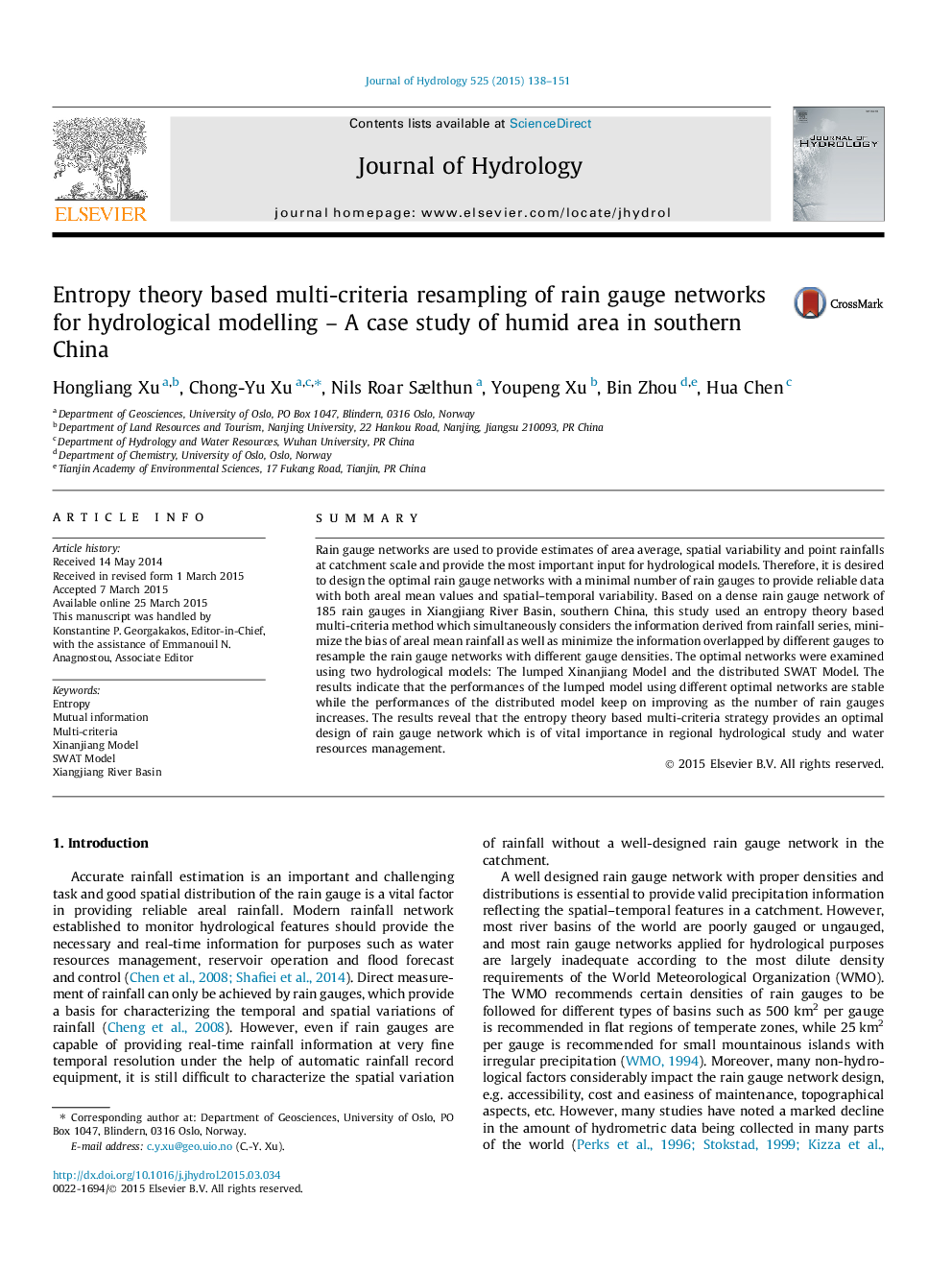| Article ID | Journal | Published Year | Pages | File Type |
|---|---|---|---|---|
| 6410583 | Journal of Hydrology | 2015 | 14 Pages |
â¢A newly designed multi-criteria strategy is used to resample the rain gauge network.â¢The optimal networks are tested using two hydrological models.â¢The lumped model using optimal networks with various gauge densities performs stable.â¢The distributed model performs better with more gauges added in the optimal networks.
SummaryRain gauge networks are used to provide estimates of area average, spatial variability and point rainfalls at catchment scale and provide the most important input for hydrological models. Therefore, it is desired to design the optimal rain gauge networks with a minimal number of rain gauges to provide reliable data with both areal mean values and spatial-temporal variability. Based on a dense rain gauge network of 185 rain gauges in Xiangjiang River Basin, southern China, this study used an entropy theory based multi-criteria method which simultaneously considers the information derived from rainfall series, minimize the bias of areal mean rainfall as well as minimize the information overlapped by different gauges to resample the rain gauge networks with different gauge densities. The optimal networks were examined using two hydrological models: The lumped Xinanjiang Model and the distributed SWAT Model. The results indicate that the performances of the lumped model using different optimal networks are stable while the performances of the distributed model keep on improving as the number of rain gauges increases. The results reveal that the entropy theory based multi-criteria strategy provides an optimal design of rain gauge network which is of vital importance in regional hydrological study and water resources management.
